Great Photographers of the 20th Century
By Artists, I mean photographers who considered photography to be a fine art and sought to advance it as such. What this meant in practice changed rapidly, moving quickly toward images that were as much in sync with the 20th century as art photography in the 19th century was with academic style and sedate salons. Under this theme, I include fashion and studio photography, even if both are mostly commercial.
Alfred Stieglitz (1864–1946)
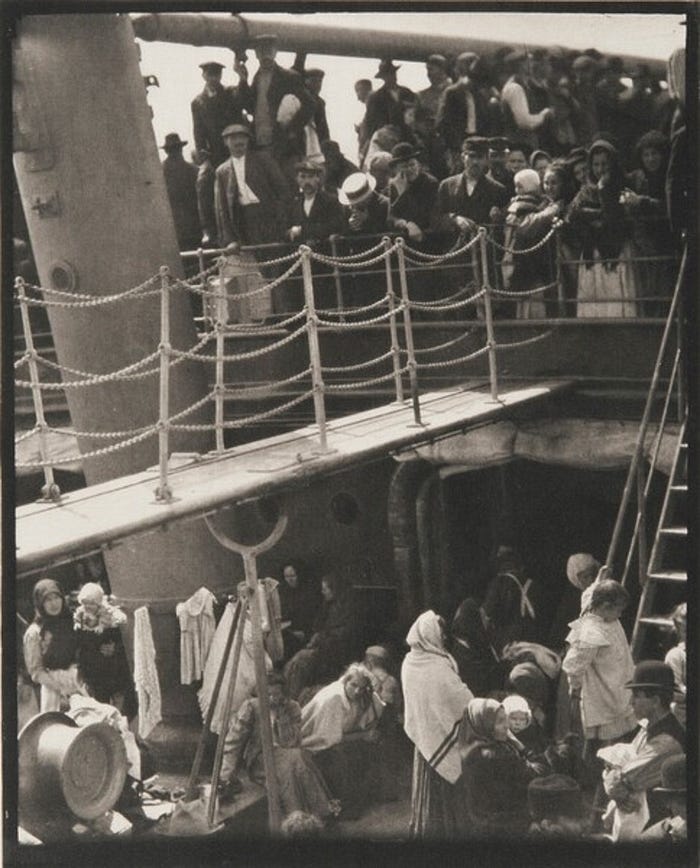 The Steerage, 1907
The Steerage, 1907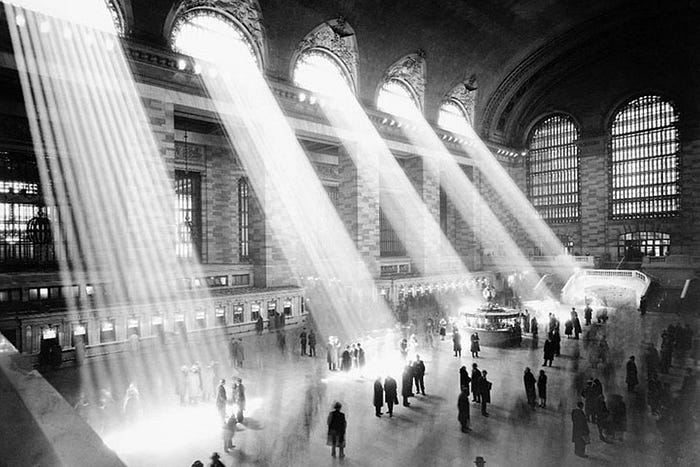 Grand Central Station
Grand Central Station
It’s hard to imagine a canon of photography without Stieglitz. Though he was well-established in the 19th century, his influence in the 20th was even greater. Throughout his life he championed photography as an art — through his own work, his writings, the organizations he led and the galleries he owned.
The question of photography as art changed context as the 20th century began. In the early and mid-19thcentury, mainstream painting was pictorial, often romantic. Photographic art imitated this, and the debate was whether photographs could live up to the supposedly superior model of painting. But with impressionism and later modern styles, painting went into territory that photography could not easily follow. Photography was no longer a weaker partner of painting — it had to assume its place as art in its own right.
Stieglitz soon became a passionate advocate of “straight” photography — unmanipulated images for which there was a clear line connecting exposure, the negative and the print, without retouching. His images reflect his powerful personality — direct, strong, heroic.
Edward Steichen (1879–1973)
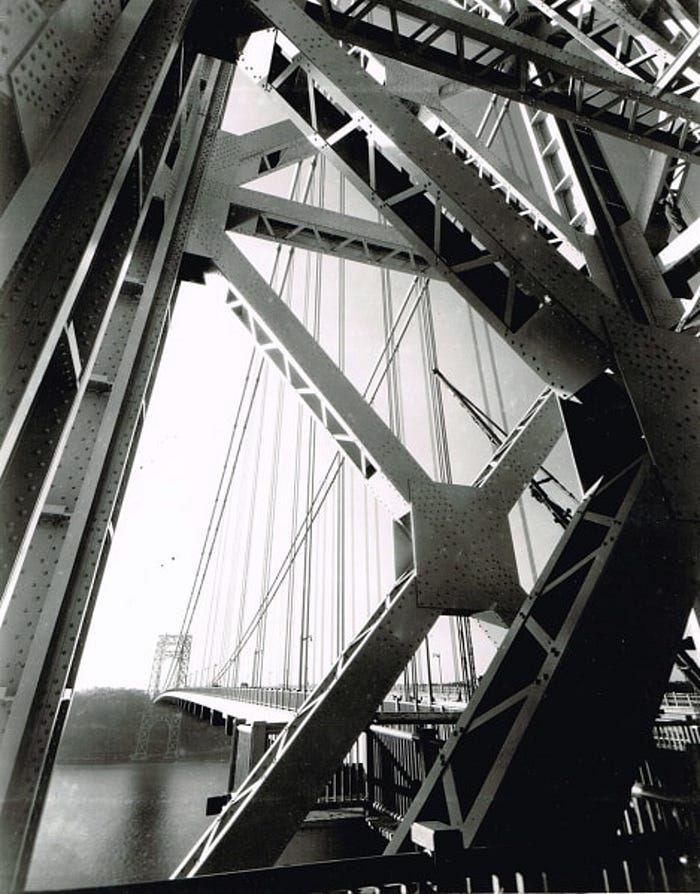 George Washington Bridge, 1931
George Washington Bridge, 1931 Isabel Johnson with a Poodle, 1934
Isabel Johnson with a Poodle, 1934
Steichen’s career is intimately connected with Stieglitz’s. Stieglitz was Steichen’s earliest champion and later collaborator, calling him “the greatest photographer that ever lived.”
His work spanned many genres, from pictorialist images in the 19th century style, to groundbreaking fashion work (he was chief photographer for Vogue and Vanity Fair), to director of a war documentary for the U.S. Navy, to advertising photography. He was director of the Museum of Modern Art’s Department of Photography until 1961, and mounted the historic Family of Man exhibit, among many others, at MoMA. That particular show encapsulated the optimistic, universalist spirit of the post-war era — the spirit of the United Nations, the end of colonialism, and the possibilities of the developing world.
Man Ray (1890–1976)
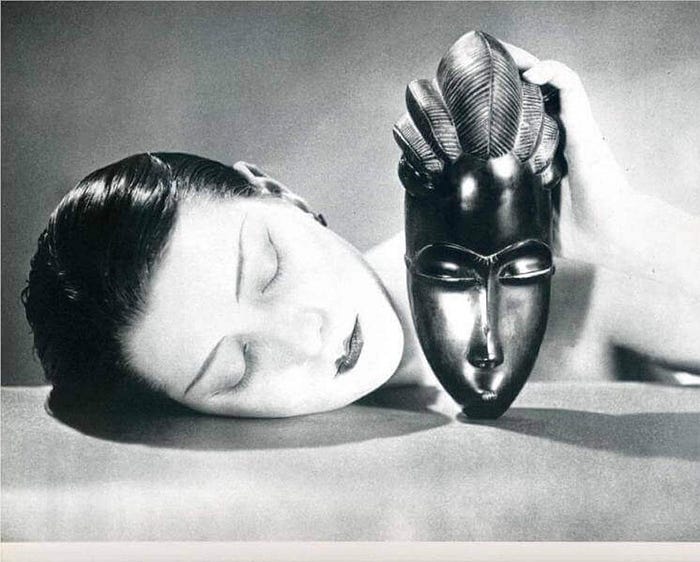 Black and White, portrait of Kiki de Montparnasse, 1926
Black and White, portrait of Kiki de Montparnasse, 1926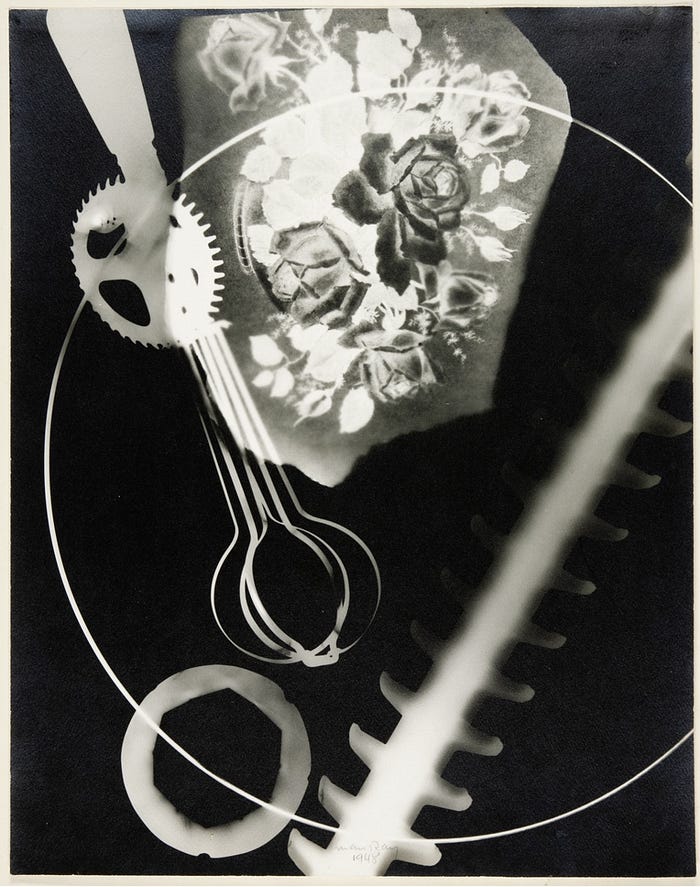 Rayograph
Rayograph
Born Emmanuel Radnitsky in Philadelphia, Ray spent much of his life in Paris as a member of the Dada and Surrealist art movement of the 20s. His portraits include virtually all members of these movements, American and French — Gertrude Stein, James Joyce, Ernest Hemingway, Jean Cocteau, Salvador Dali, Max Ernst, Peggy Guggenheim and many others. He supported himself as a commercial fashion photographer but is primarily known for his experimental work, including Rayograms (pictures made on photographic paper using shadows and reflections rather than a camera) and solarization (a technique he reinvented with surrealist photographer Lee Miller).
Edward Weston (1886–1958)
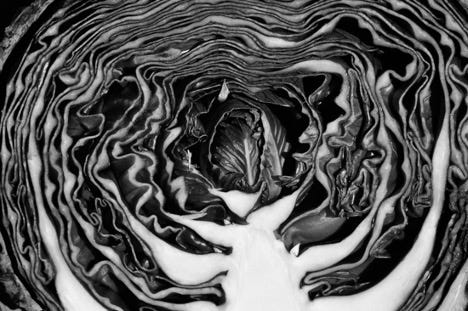 Cabbage
Cabbage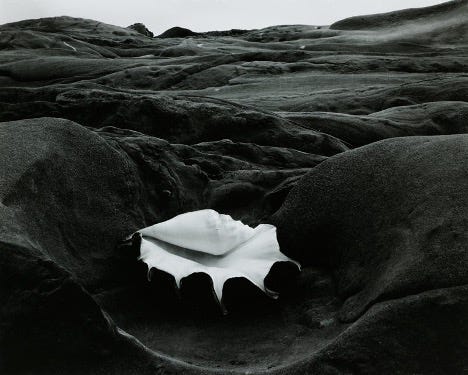 Shell
Shell
Edward Weston was of the opposite coast. He was, in Sontag’s words, a “heroic modernist,” using photography to “[reveal] to others the living world around them, showing to them what their own unseeing eyes had missed.” Weston’s most famous images thus include the shell above, cabbage leaves, bell peppers and driftwood. His technique was meticulous and his prints flawless. He produced outstanding portraits, but his work along the California coast is what he was most remembered for. He was an exemplar of the ability of the camera to glorify seeing for seeing’s sake.
Paul Strand (1890–1976)
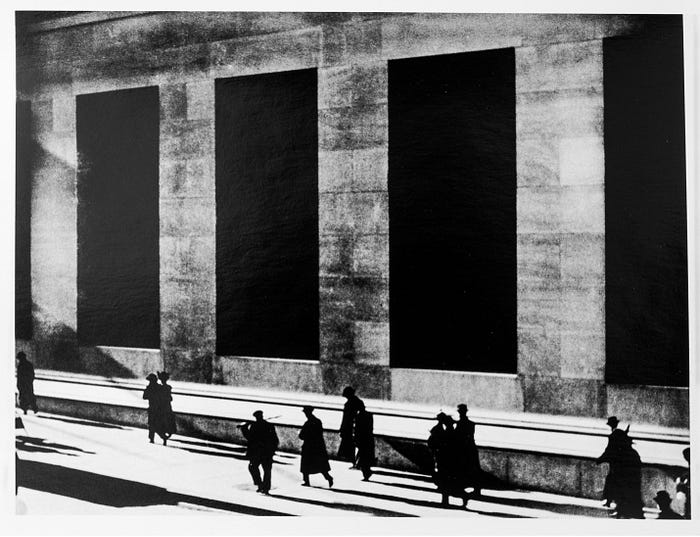 Wall Street, 1915
Wall Street, 1915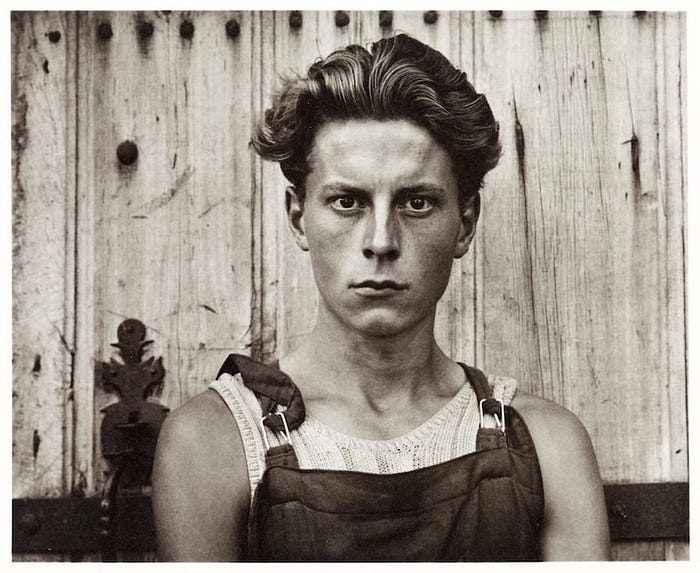 Young Boy, France, 1951
Young Boy, France, 1951
Paul Strand was a quiet man who produced heroic images — heroic in their visual scale and subject matter, yet not as self-consciously dramatic as Steichen’s and Weston’s. He was endlessly attentive to the subtleties of his prints, famously spending more hours and money on creating his platinum prints than he was able to realize by selling them. Calvin Thomkins, in a 1974 New York profile, noted “What’s striking, above all, is how quickly Paul Strand pictures began to look like Paul Strand pictures — and how definitively they remained that way, no matter the subject at hand.”
Ansel Adams (1902–1984)
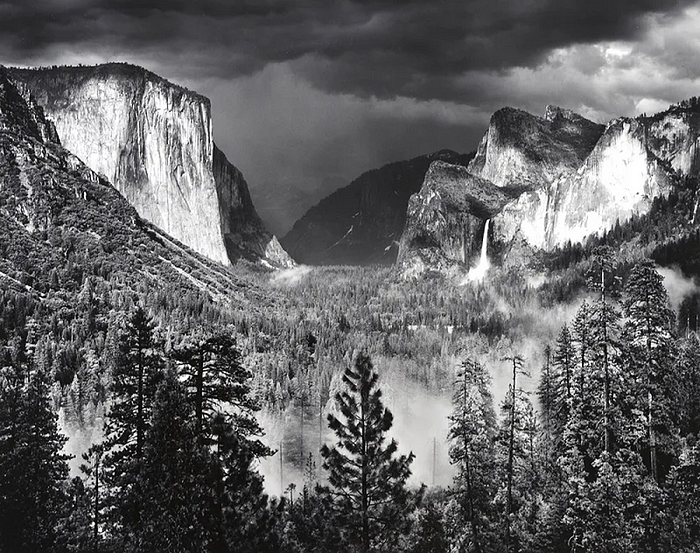 Yosemite
Yosemite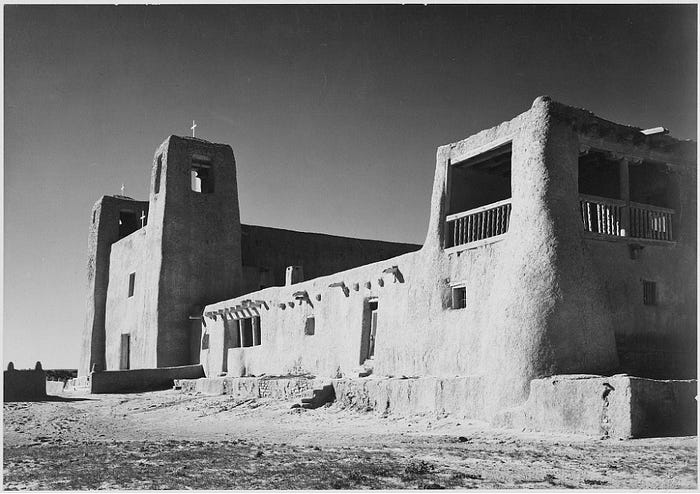 Church, Acoma Pueblo
Church, Acoma Pueblo
Ansell Adams is the only famous photographer most Americans can name, and that is probably for the best. He was a patriot of the American landscape. He grew up with it. He grew into it. He made it his own.
His early work is, to me, less than exciting. The Corcoran Gallery mounted a major exhibit of his pictures in 2007. Rooms of his early work, printed in 8” x 10” or so, were good compositions, but nothing memorable. Low contrast, sepia-toned, static. It is his late work that excites. Originally a pianist, his adage that the negative is the score, but the print is the performance, rings totally true. Take Moonrise Hernandez, one of his most famous images. Captured in haste from the top of his van as he stopped by the scene on the way home at the end of the day, the flat negative is nothing like the eventual prints, which were increasingly dramatic as the years went on.
Like many great photographers, he downplayed his technical preoccupations as incidental to his art, but he was the consummate craftsman. He transformed landscape photography forever, elevating it from a passive documentary of wilderness into a celebration of the planet itself.
Cecil Beaton (1904–1980)
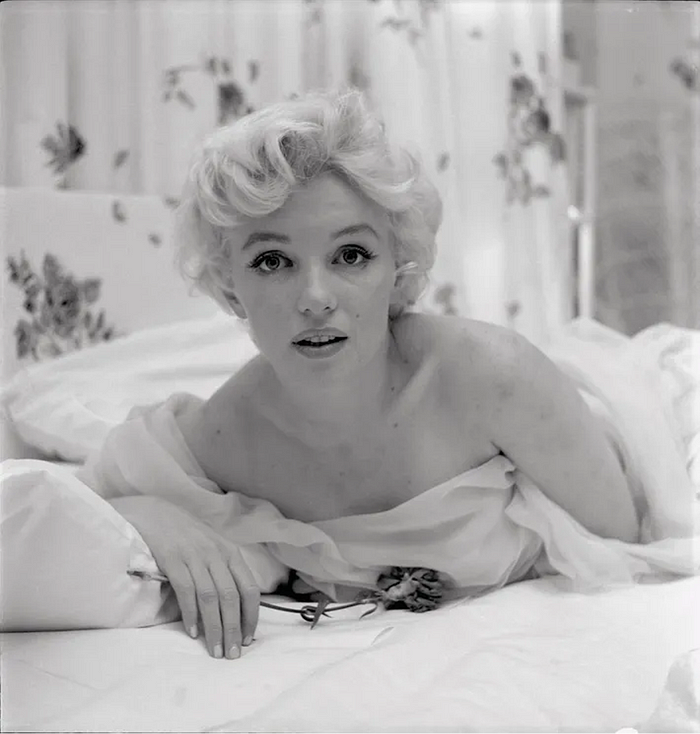 Marilyn Monroe, 1956
Marilyn Monroe, 1956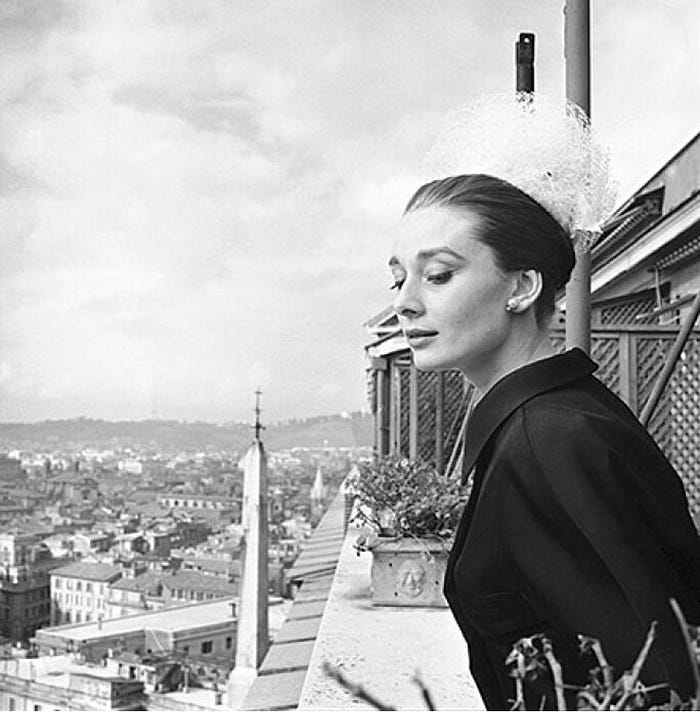 Audrey Hepburn, Rome, 1960
Audrey Hepburn, Rome, 1960
Including Beaton in the canon is not a stretch. Fashion is art. He started as a society photographer, yet his first exhibition won him a contract with Vogue. He went on to become the photographer to the Royal Family and portraitist to Hollywood nobility. Along the way he became intrigued with surrealism, designed Oscar-winning costumes and stage sets, and photographed World War II. Yet he largely remained true to his dedication to fashion and society. That was not to say that he was uncritical of his subjects: he analyzed them in detail. But he remained true to visions of elegance and grandeur in a rarified world.
Richard Avedon (1923–2004)
Suzy Parker with Robin Tattersall, Place de la Concorde, Paris, 1956
Paul McCartney, as astronaut, The Beatles, with Jean Shrimpton, London, January 26, 1965
Richard Avedon was certainly one of the most exciting photographers of the 20th century. Working for Harpers Bazaar, Vogue and Elle, his work is noted for its dynamism, motion and energy. His compositions are entirely his own. As far as the canon is concerned, his strangeness — utter uniqueness of form and motion — is as easy to appreciate as it is inimitable.
Avedon’s commercial work was intended, of course, to flatter, but his personal work was ruthlessly honest. For him, the photograph was the goal, not the subject matter. “The pictures have a reality for me that the people don’t. It is through the photographs that I know them.” In short, artifice doesn’t count. The truth is in the result.
Robert Mapplethorpe (1946–1989)
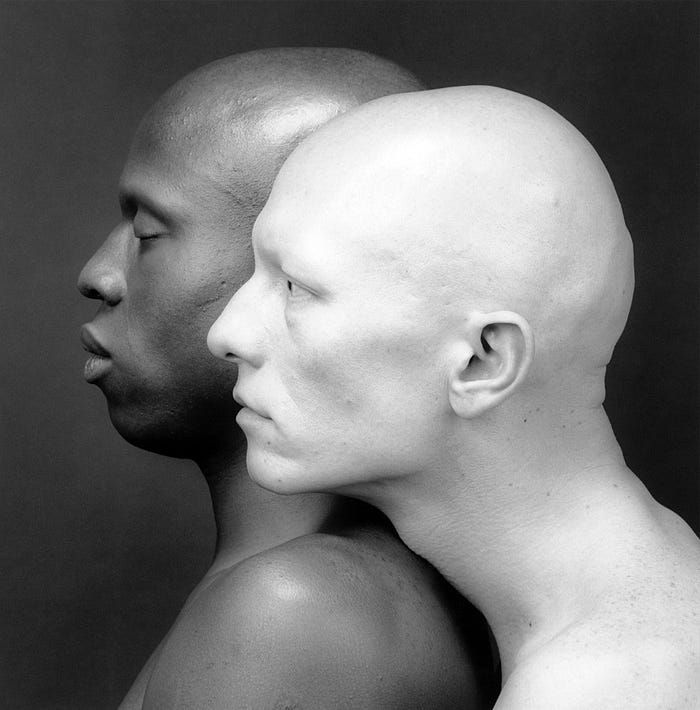 Ken Moody and Robert Sherman, 1984
Ken Moody and Robert Sherman, 1984 Two men dancing, 1982
Two men dancing, 1982
Dying of AIDS at the early age of 42 in 1989, Robert Mapplethorpe nonetheless upended what was acceptable in artistic photography by applying studio techniques to sexually transgressive material. “I am looking for perfection in form, whether with portraits, penises or flowers.” His planned exhibition at the Corcoran Gallery in Washington, DC, was taken up as a cause célèbre by Senator Jesse Helms. In fear of Helms and what they thought he represented, the museum’s board cancelled the show the day before its opening. This triggered a downward spiral of donor revolts, cancelled shows and membership declines that led to the eventual dissolution of the museum itself in 2014. A long tale that illustrated the power of a single artist to polarize public opinion and influence events.
Mapplethorpe’s prints reveal the depth of his craft and search for perfection. Any small flaw stands out. He likely would have been thrilled with the ability of digital photography to come close to the technical ideals that continued to elude even the most talented artisans of paper, gelatin, and silver iodide.
Jerry Uelsmann (1934–2022)
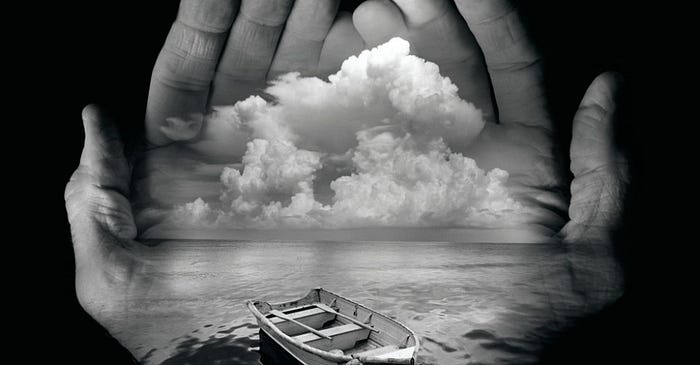 Untitled
Untitled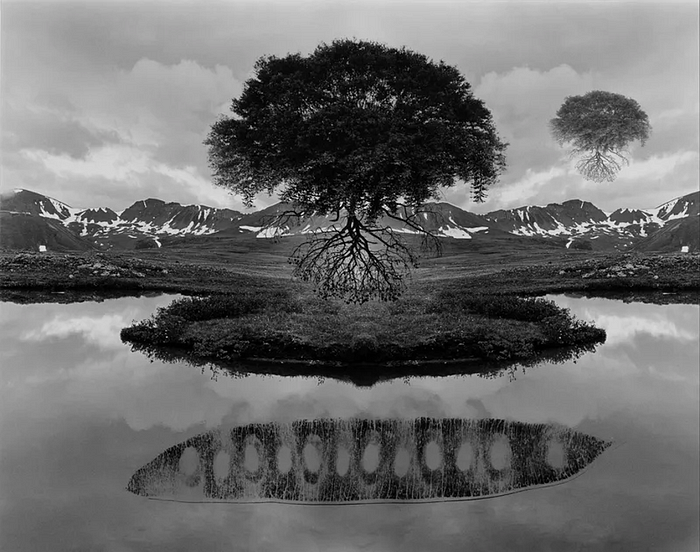 Floating Tree, 1969
Floating Tree, 1969
Jerry Uelsmann achieved his composite images were achieved entirely with analog photographic processes. Assembled from a vast collection of his own photographs, he created them in the darkroom using complex composite printing — a dozen enlargers and numerous paper-to-paper contact prints. He coined the phrase “post-visualization” to contrast with Ansel Adams famous pre-visualization (anticipating the final print before pressing the shutter). Fascinated by the dream imagery of surrealist painters, he was a meticulous craftsman whose final images had the depth of tonalities typical of artists like Edward Weston or Minor White. His work — immensely popular in the 1980s — became an inspiration as digital photography evolved.
William Eggleston (1939 — )
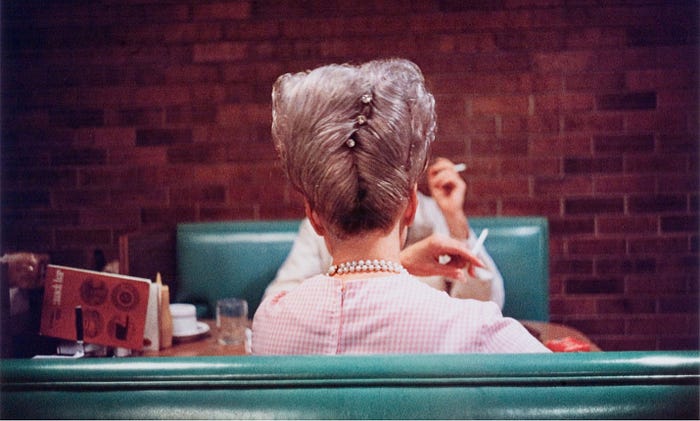 From Los Alamos Collection, 1976
From Los Alamos Collection, 1976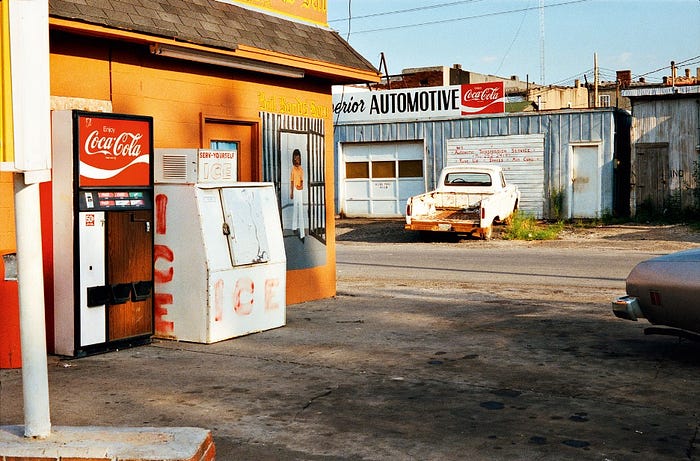 From Ancient and Modern Collection, 1992
From Ancient and Modern Collection, 1992
William Eggleston was born in Memphis, Tennessee. Like Cartier-Bresson and Lartigue, his family was affluent. He did not acquire a camera until he attended Vanderbilt University in the late 50s, when a friend gave him a Leica. He left Vanderbilt and wound up at the University of Mississippi, where another friend showed him a book of photographs by Magnum Photos. It contained, of course, numerous pictures by Cartier-Bresson. The event was Eggleston’s own decisive moment. He soon internalized Cartier-Bresson’s style to such an extent that he was producing what he called “perfect fake Cartier-Bressons.” He felt trapped.
Interestingly, while Eggleston was discovering Cartier-Bresson, Robert Frank was shocking the cultural establishment, breaking all the rules of elegant composition that Cartier-Bresson had just put in place. Eggleston knew nothing of this. He developed something of Frank’s disruptive approach independently, based on his own rebellious personality, the radicalism of the 60s generally, and his exposure to other photographers through MoMA and its photography curator, John Szarkowsky, who favored an approach he called the personal documentarists — Lee Friedlander, Diane Arbus and Garry Winogrand.
His self-described “democratic camera” was soon taking pictures of all sorts of mundane subjects: bare light bulbs, appliances, shopping malls, parked cars. His pictures were untitled. They had no clear message.
But Eggleston was the photographer who pushed color photography over the tipping point from a déclasséeconsumer product, to art. His radical compositions and subject matter were half the story — it was his adoption of color for which he is mainly known.
Eggleston’s color work is not in color so much as it is about color. He famously said, “The world is in color. And there is nothing we can do about that.” His interest perhaps started while he was working at a commercial photography lab, watching amateur snapshots being processed in a somewhat garish palette of early slides. He immediately thought of what he could produce using his far more capable Leica.
From there his work progressed technically to the use of (very expensive) dye transfer prints, usually restricted to commercial advertising proofs, and on to more modern techniques. The key was his ability to control the palette to create the exact profiles and grading he wanted using analog technology.
Author’s Note:
This article is part 2 from a 3-part series. You can read part 1 here. Then, continued next, will be part 3 on August 29: Great Photographers of the 20th Century : the Reporters







































